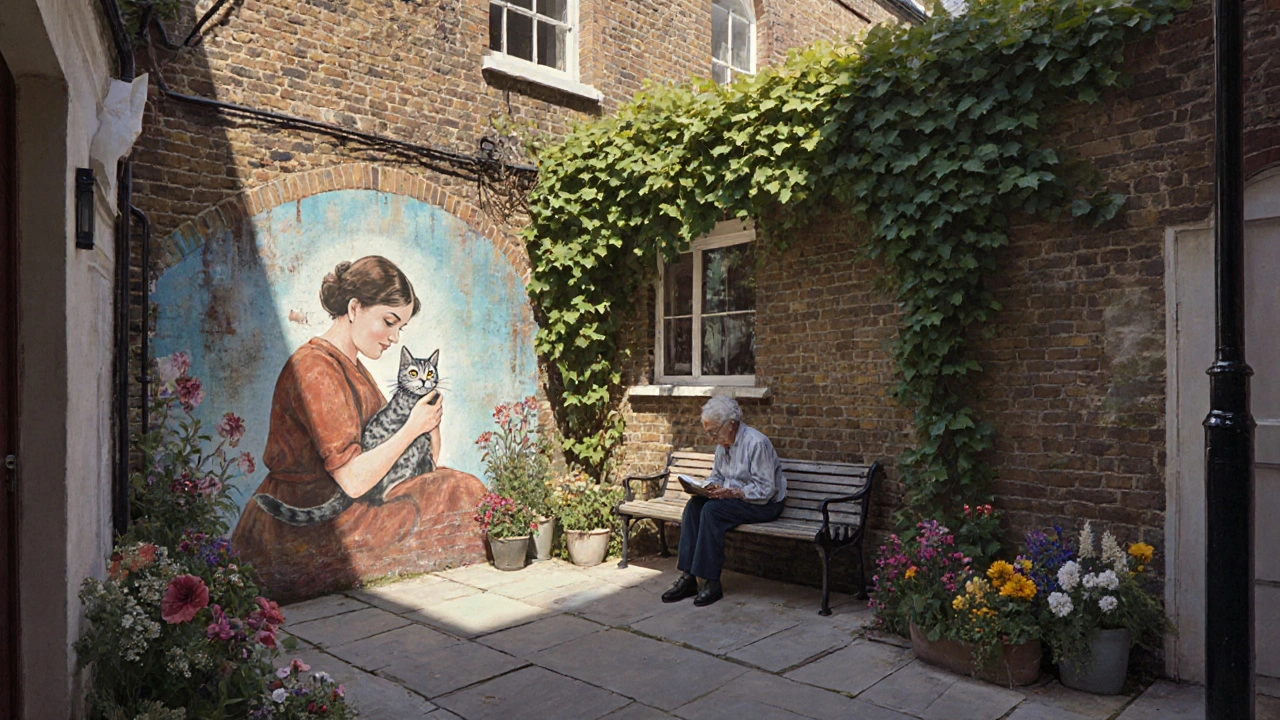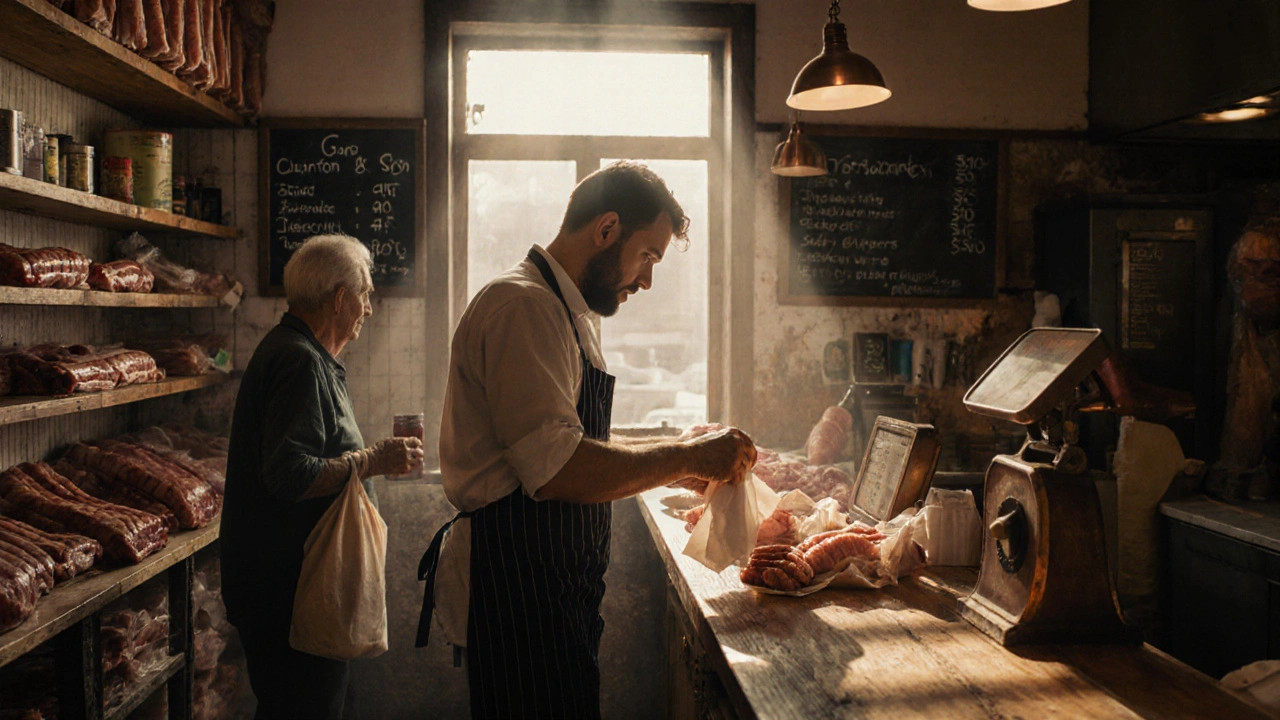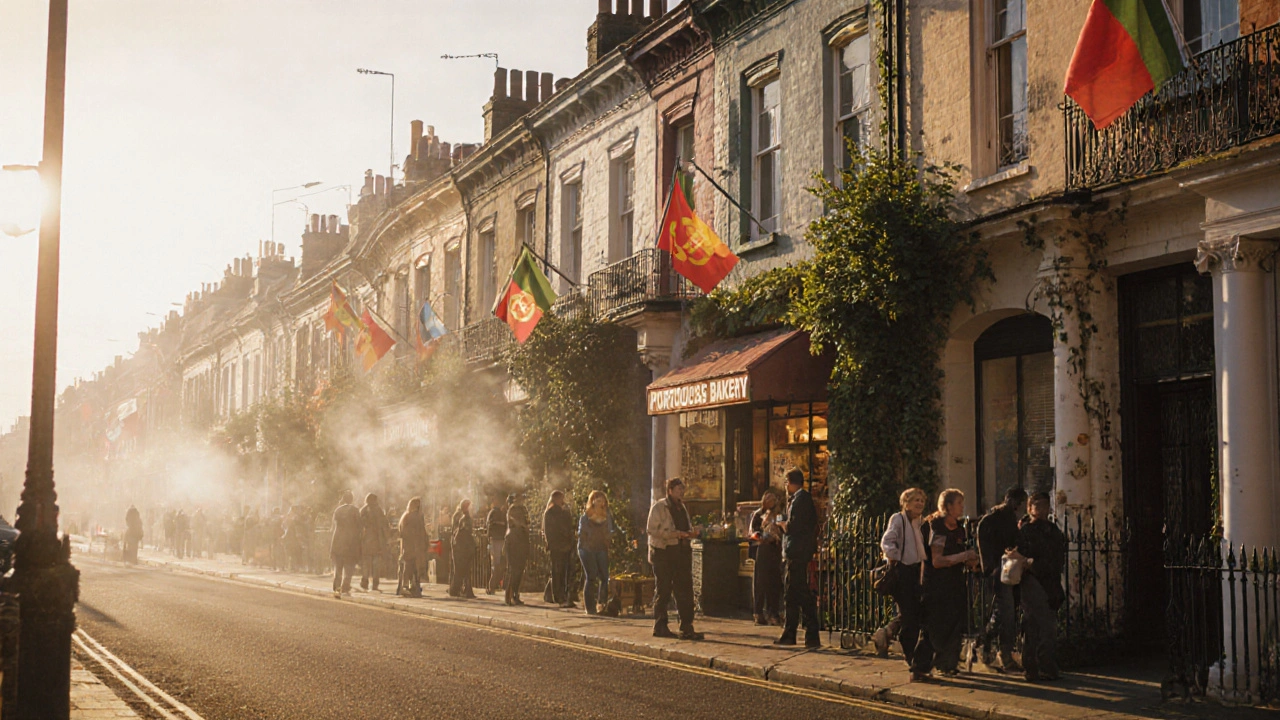Notting Hill isn’t just the place where Hugh Grant fell in love in that movie. It’s a real, breathing neighborhood with colorful houses, hidden gardens, and locals who’ve been here for generations. If you’re thinking of moving here-or just want to know what it’s really like to walk these streets-you need more than pretty photos. You need to know where the real deals are, who runs the corner shops, and which parts feel like home versus tourist traps.
Where the Streets Tell Stories
Notting Hill’s streets aren’t just pretty-they’re layered with history. Portobello Road is the big name, famous for its market, but the real magic lives in the side streets. Ladbroke Grove, Holland Park Avenue, and Westbourne Park Road are where locals live, not just browse. These are the roads with wrought-iron railings, ivy-covered terraces, and the occasional blue plaque marking where a poet, painter, or punk once lived.
Walk down Golborne Road on a Saturday morning and you’ll hear Portuguese, Jamaican patois, and Arabic mixed with the clink of coffee cups. This isn’t curated for visitors. It’s a working-class immigrant neighborhood that became a cultural melting pot in the 1950s and never lost its soul. The houses here aren’t all £3 million showpieces. You’ll still find council flats tucked between renovated brownstones, and rent-controlled apartments where families have lived for 30 years.
Don’t miss the hidden alleyways off Notting Hill Gate. One leads to a tiny courtyard with a mural of a woman holding a cat-locals call it "The Guardian." No sign. No tourist map. Just a quiet spot where neighbors leave flowers on birthdays.
Shopping That Doesn’t Feel Like Shopping
Yes, Portobello Road Market is packed with tourists on weekends. But if you go early-before 9 a.m.-you’ll find the real sellers: elderly women selling homemade jam from their kitchens, vintage book dealers who remember every title they’ve ever owned, and a single stall that’s sold handmade leather belts since 1972.
For everyday shopping, skip the chain stores. Head to Notting Hill is home to a cluster of independent grocers, butchers, and bakeries that have survived because they know their customers by name.
- Westbourne Grove has La Fromagerie, where the staff will tell you exactly which cheese goes with your wine-and won’t push the expensive stuff.
- Clayton & Son on Portobello Road is a 1920s butcher that still hand-packs sausages in paper, not plastic.
- St. John’s Bakery makes sourdough with a 48-hour ferment. You’ll see the same elderly man picking up his loaf every Tuesday.
There’s no Uber Eats dominance here. People still walk to the shop. They chat. They remember your kid’s name. That’s why the local food scene feels alive-not like a curated Instagram feed.
The Community That Holds It Together
Notting Hill’s community spirit isn’t about festivals-it’s in the small things. The annual Notting Hill Carnival started in 1966 as a response to racial tensions. Today, it’s Europe’s biggest street party, but the heart of it? The same families who set up the sound systems, cook jerk chicken in their backyards, and let neighbors borrow chairs.
There’s a community garden on Ladbroke Crescent where residents grow tomatoes, herbs, and roses. No membership fee. Just show up with a trowel. The garden’s rules? No plastic. No loud music. And if you take a tomato, leave a seed.
Local groups run free after-school programs for kids, English classes for new immigrants, and monthly neighborhood clean-ups. You won’t find these advertised on Facebook. You’ll hear about them at the post office, the pub, or the corner store.
Even the landlords here often live in the same building. One owner, 78-year-old Mrs. Ellis, still fixes leaky taps for her tenants. She doesn’t charge. She just says, "It’s not right to let a good house go to waste."

Living Here: The Real Costs
Let’s be honest: Notting Hill is expensive. A one-bedroom flat averages £2,800 a month. But that’s not the whole story. The cost of living here isn’t just rent-it’s time, community, and access.
Compared to other London neighborhoods, you’ll spend less on transport. Most residents walk or bike. The nearest tube station is Notting Hill Gate (Central and District lines), and you’re rarely more than 15 minutes from a bus stop. That saves £150+ a month on travel cards.
Food costs are higher than in outer boroughs, but you’re buying better quality. A £5 sourdough loaf lasts three days. A £12 joint of pork from Clayton & Son feeds four. You eat less, but you eat better.
There are no big supermarkets here. No Tesco Express. No Amazon lockers. You won’t find 24-hour convenience stores. That means you plan your shopping. You cook more. You talk to people. That’s the hidden value.
Who Really Lives Here?
Notting Hill has a split identity. On one side: the wealthy, the celebrities, the investors buying second homes. On the other: teachers, nurses, artists, and immigrants who’ve built lives here over decades.
According to the 2021 census, 32% of residents were born outside the UK. The largest groups are from Portugal, Jamaica, and Nigeria. You’ll see Portuguese flags hanging outside homes on Golborne Road. Jamaican reggae blasts from open windows in August. Nigerian mothers run small tailoring shops near the market.
It’s not a perfect place. Gentrification is real. Some old tenements have been turned into luxury flats. Rent has doubled since 2010. But the community fights back. Local campaigns have blocked new developments that would erase affordable housing. The Notting Hill Housing Trust still manages over 1,200 homes for low- and middle-income families.
This neighborhood survives because people care. Not because it’s trendy. Because it’s home.

What to Do If You’re Thinking of Moving Here
If you’re considering moving to Notting Hill, here’s the honest advice:
- Don’t fall for the "Instagram aesthetic." Look for places on side streets, not Portobello Road. You’ll pay 30% less.
- Visit at different times: morning, evening, weekend. See how quiet it gets after 8 p.m. See if the streetlights work.
- Talk to the shopkeepers. Ask them how long they’ve been there. If they’ve been 15+ years, the neighborhood’s still alive.
- Check the council’s planning portal. Look for upcoming developments. If a new block is planned for 12 luxury flats, walk away.
- Join the local Facebook group: "Notting Hill Residents & Friends." It’s full of real advice-not ads.
Most people who move here leave because they expected a movie. They stay because they found a community.
Is Notting Hill safe for families?
Yes, but not because it’s quiet-it’s because people look out for each other. Crime rates are average for central London, but there’s strong community policing. Local schools like St. Mary’s and Notting Hill & Ealing High have excellent reputations. The parks are safe, and kids walk to school in groups. Parents know each other. Kids know the shop owners. That kind of watchfulness makes it safer than many suburbs.
Can you afford Notting Hill on a regular salary?
It’s tight, but possible. If you earn £50,000-£60,000 a year, you can live here in a one-bedroom flat if you’re willing to compromise on size or location. Many people share flats, live in basement units, or rent in the quieter edges like West Kensington. The key is avoiding tourist zones. Rent drops significantly just a 10-minute walk from Portobello Road. Also, remember: no car needed. That saves £1,000+ a year.
What’s the best time to visit Notting Hill?
Late spring (May-June) or early autumn (September-October). The weather’s mild, the crowds are thinner, and the flowers are out. Avoid August-too many tourists. Avoid weekends in September for the Carnival unless you want shoulder-to-shoulder crowds. Weekday mornings at the market are perfect-fresh produce, no lines, and the locals are in a good mood.
Are there any hidden gems most tourists miss?
Definitely. The Holland Park Estate has a secret garden behind the church-you need to ask the caretaker for the key. The Ladbroke pub on Ladbroke Grove has live jazz on Tuesdays and no sign outside. And don’t miss Wendy’s Bookshop on Westbourne Park Road. It’s tiny, run by a woman who’s read every book on the shelf, and she’ll handpick one for you based on your mood.
How does Notting Hill compare to other London neighborhoods like Camden or Brixton?
Camden is loud, chaotic, and full of nightlife. Brixton is raw, creative, and deeply rooted in Black British culture. Notting Hill is quieter, more layered. It’s not about rebellion-it’s about preservation. You’ll find more historic architecture, fewer street artists, and a stronger sense of inherited community. It’s less about "what’s new" and more about "what’s kept." If you want energy, go to Brixton. If you want belonging, stay in Notting Hill.
Final Thought: It’s Not a Postcard
Notting Hill isn’t perfect. It’s expensive. It’s crowded. It’s changing. But it’s still a place where people know each other. Where the baker remembers your coffee order. Where the old man on the corner waves to every kid walking home from school. Where the community garden still grows tomatoes because someone cared enough to plant them.
If you’re looking for a neighborhood that feels like home-not a brand-this is it. You won’t find that in a guidebook. You’ll only find it by walking the streets, talking to the people, and staying long enough to see the seasons change.
